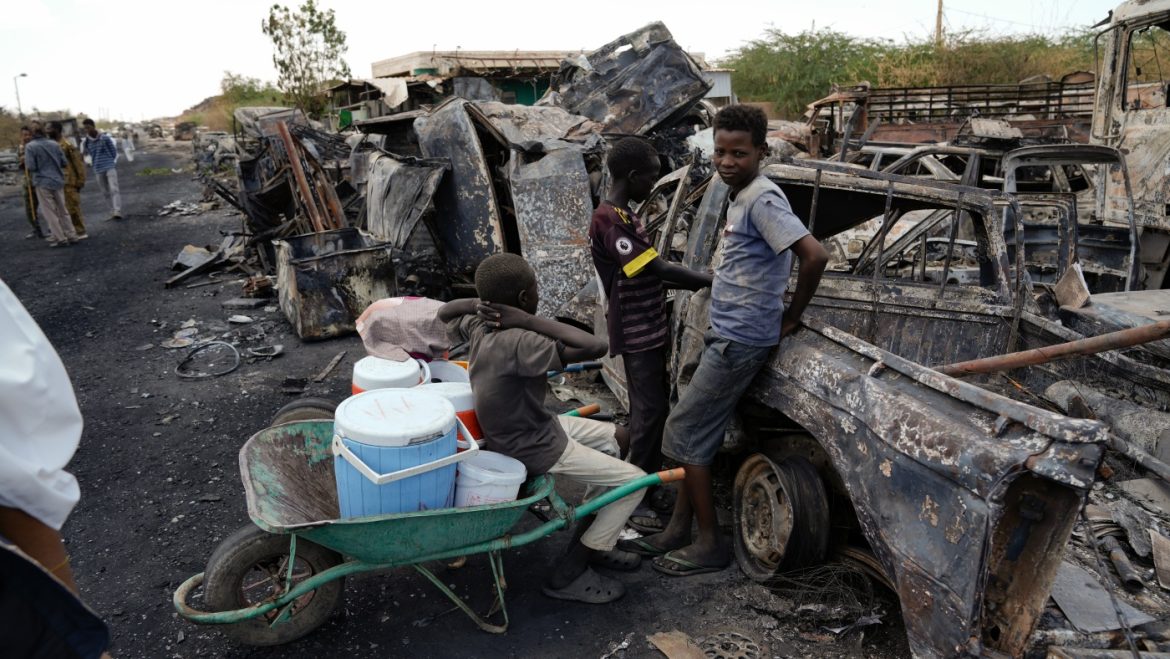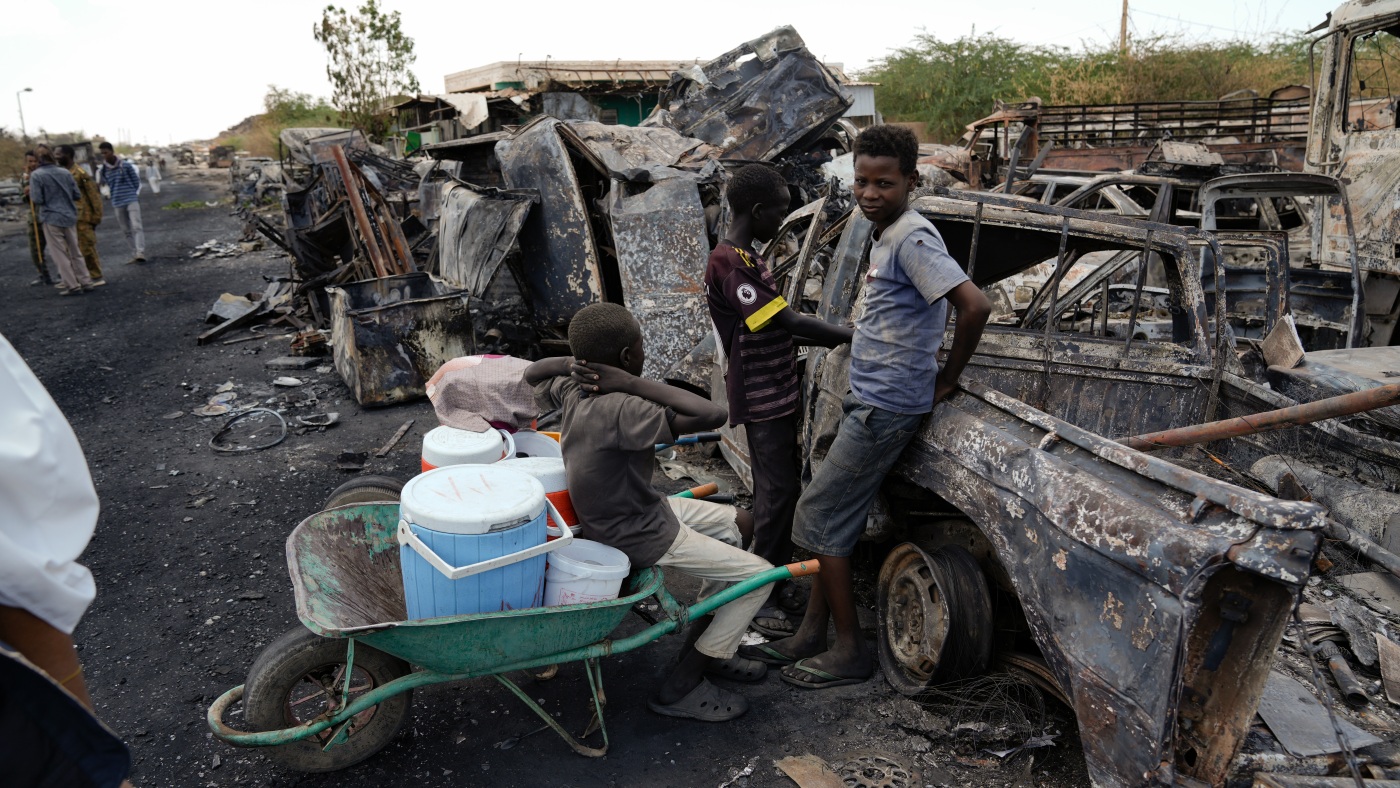Rebuilding Khartoum: A City’s Fragile Return from Ruin
The recent recapture of Khartoum, Sudan’s capital, by government forces has ushered in a tentative beginning of recovery in a city torn apart by a fierce two-year conflict between the Sudanese Armed Forces and the paramilitary Rapid Support Forces (RSF). Once known as a bustling metropolis on the banks of the Nile, Khartoum now faces the daunting task of stitching together its shattered urban fabric and rekindling a sense of normalcy for its traumatized inhabitants. The reappearance of humble symbols like bicycles on vacant streets and the reopening of vital bakeries highlights both the resilience of its people and the formidable challenges ahead.
—
The Devastation: Scars of Conflict on Khartoum’s Landscape
The war, described by the United Nations as causing the world’s worst humanitarian catastrophe, left extensive destruction in Khartoum. For two years, the city was transformed into a battlefield where violent clashes decimated residential neighborhoods, commercial areas, and public infrastructure. Streets that once hummed with activity lie deserted or cluttered with the ruins of skeletal apartment blocks and burnt-out vehicles. Western suburbs such as Omdurman bore the brunt of unprecedented violence, with civilians caught in the crossfire and cruelly used as human shields.
Amid the rubble, everyday life became a struggle, with acute shortages affecting food, water, and medical supplies. The closure of bakeries meant bread—a staple of Sudanese life—became scarce, forcing long, desperate lines at the few that remained open. Amidst this hardship, the city’s heartbeat had nearly stopped.
—
Signs of Renewal: Bicycles and Bakeries as Symbols of Hope
In the wake of government forces retaking Khartoum in April, the city is tentatively stirring back to life. One of the most striking signs of revival is the return of bicycles to the eerily quiet streets. Residents now ride bikes through broad, deserted roads—vehicles being scarce or damaged—and rediscover an unexpected freedom and mobility. Donkey carts clang over worn asphalt, while the scent of fresh tomatoes wafts from newly reopened market stalls. These small but vivid indications underscore a community’s desire to reclaim its city and routine.
Perhaps most poignantly, the reopening of bakeries such as the one in Shambat neighborhood—a once-devastated area north of Khartoum—has brought a surge of optimism. Bread’s cultural and practical importance in Sudan cannot be overstated. The bakery’s return is more than commerce restarting; it is a declaration of resilience and a beacon of hope amid the ruins. People queue patiently, savoring the revival of a basic necessity that signifies stability. This fragile resurgence provides psychological comfort, anchoring the populace to their daily lives and heritage even as the city reconstructs around them.
—
Challenges Ahead: Rebuilding More Than Just Infrastructure
The task of rebuilding Khartoum extends far beyond brick and mortar. The war deeply fractured the social fabric and sowed economic disruption. Damaged infrastructure, from roads and hospitals to schools and utilities, must be repaired or rebuilt. Essential services like water supply and electricity remain erratic or non-existent in many neighborhoods.
Moreover, psychological trauma permeates the population. Civic trust has been undermined by years of fighting and hardship, and social cohesion requires careful nurturing. Economic hardship persists, with many bakeries having shut due to shortages and inflation, affecting affordability and access even as some facilities reopen.
The capital’s elite institutions, such as the Equestrian and Racing Club, which had supplied social and recreational outlets for decades, are themselves struggling amid upheaval, reflecting how war has touched every level of society. Restoring cultural and social institutions will be key to holistic recovery.
—
Lessons from Other War-Torn Cities
Khartoum’s story mirrors the experiences of other cities that have risen from ruin—places like Mosul in Iraq or regions affected by prolonged civil wars. In these narratives, post-conflict reconstruction requires a multi-dimensional approach: rebuilding physical infrastructure, revitalizing economic activity, fostering reconciliation, and addressing humanitarian needs concurrently.
The return of small enterprises, like bakeries, and the blossoming of informal transport mechanisms, such as bicycle use, often mark the grassroots level return of normality, underscoring that recovery begins with people reclaiming their livelihoods and public spaces.
—
A Delicate Road to Rebirth
Khartoum stands at a crossroads. While the physical scars of conflict are stark, the city’s gradual revival—characterized by the humbling return of boats and bakeries—signals an indomitable human spirit. The peace is fragile, and the risk of renewed violence or political instability looms, but for now, Khartoum’s residents are reclaiming their city bit by bit.
To make a sustainable comeback, efforts will need to encompass coordinated reconstruction, economic revitalization, and social healing. Bread and bicycles—symbols of life’s simplest necessities and movement—remind us that even in the darkest aftermath, life seeks to press onward and rebuild.
—
Conclusion: Rebuilding Khartoum’s Soul through Everyday Acts
The revival of bakeries and bicycle rides may seem modest in the grand narrative of conflict recovery, yet they carry profound meaning for Khartoum. They represent continuity amid rupture, hope amid despair, and the first threads of a tapestry that can one day restore the city’s vibrancy.
Khartoum’s struggle is not only about restoring buildings but reclaiming the rhythms of daily life that give a city its soul. The resilient clatter of donkey carts, the aroma of fresh bread, the quiet journey of cyclists through ghostly streets—all tell a story of survival and renewal in a city determined to rise from the ashes.


